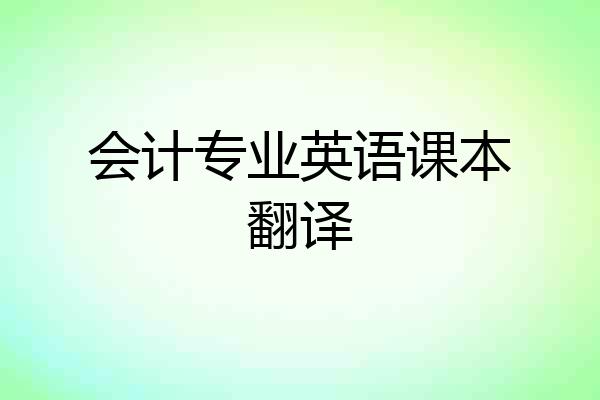
年糕年糕熊
Long before document-shredding became headline news, accountants found themselves under pressure to change.Over the past two decades, innovations in computer technology rendered many of the old-fashioned auditor's functions obsolete, prodding accountants to find other ways to bring in revenue.Companies' desire to produce ever-rosier results for an ever-larger and savvier shareholding public compelled accountants to find ways to put the best possible spin on clients' financial reports.And then there was simple greed. The industry had already shown it was susceptible. In the early 1970s, a prominent accountant was linked to the Watergate scandal. The next decade, the savings-and-loan crisis raised questions about how accountants could have let things get so bad.In recent years, partners' pay, largely determined by hourly billing rates, fell way behind that of accountants' investment-banking brethren, enriched by the rise of the stock-market culture of the '80s and '90s. Hiring consultants and having people sell their services to audit clients was a way to narrow the gap.And ultimately the ancient profession sacrificed the public confidence that underpinned its reputation.The industry was formed as a vessel of trust, originating more than 10,000 years ago with stone counters in Jericho. In ancient Sumerian cities of the land that is now Iraq, bookkeepers documented wealth by pressing the ends of sticks into damp clay tablets that hardened into permanent records.Formal accounting was invented by a Franciscan friar named Luca Pacioli in 1494 in his paper "Summa de Arithmetica, Geometria, Proportioni et Proportionalita" ("Everything About Arithmetic, Geometry and Proportion").The treatise described double-entry bookkeeping -- that for every credit entered into a ledger there must be a debit, a concept created by Florentine merchants and hailed by Goethe as "one of the most beautiful discoveries of the human spirit."Three traits shared by successful merchants, Mr. Pacioli wrote, were access to cash, a constantly updated accounting system and a good bookkeeper. His contemporary Christopher Columbus apparently knew that: On his voyage to the New World, he took a royal accountant to track his "swindle sheet when he started to figure the cost of gold and spices he would accumulate," according to Alistair Cooke's 1973 book "America."The craft changed little until the industrial revolution, when accounting advanced from pure recordkeeping to a means of survival. Josiah Wedgwood, Charles Darwin's grandfather, kept his British pottery factory alive during the depression of 1772 through the innovation of cost accounting -- calculating the costs of materials and labor for each step of the manufacturing process, and then setting prices to ensure enough margin to remain viable.By the mid-19th century, "accompants," as accountants were known, were flourishing in Britain. The Cooper brothers, whose name lives on in PriceWaterhouse Coopers, ran a Dickensian operation of screeching supervisors lording over clerks toiling long hours for scant pay. The industry followed European investments to the New World, and in 1887, 31 accountants formed the predecessor to the American Institute of Certified Public Accountants. A decade later, they created a standardized test, bestowing on a man named Frank Broaker the honor of becoming the first CPA.In the early 1930s, after the financial scandals of the '20s and the corporate failures of the Great Depression, the industry sought to formalize consistency, transparency and trust in the profession. Already, in 1922, AICPA had banned its members from advertising, saying it wasn't dignified. The group also forbade accountants to poach each other's clients.The profession got its own governing board and a manual called Generally Accepted Accounting Practices -- GAAP for short. The profession also won the responsibility for auditing public companies, though not without an intense congressional debate.Accountants had become moral guardians -- an image reinforced in the public's imagination in the 1930s, when Price Waterhouse was enlisted by the Academy of Motion Picture Arts and Sciences to count ballots for the Academy Awards.In lieu of the hard sell, accountants networked at the country club and sat on the boards of nonprofit organizations and chambers of commerce.In the 1970s, the federal government, amid questions about some companies' accounting procedures, set up the Financial Accounting Standards Board to oversee accountants. But it soon also removed a lot of the restrictions that had prevented big firms from competing with each other.In the late 1970s, the Federal Trade Commission, concerned about anticompetitive practices, began pushing AICPA to allow accountants to advertise. By 1990, the group had lifted most restrictions on ads.As the 1980s dawned, globalization and deregulation brought new challenges. To raise huge amounts of money, companies turned increasingly away from traditional bank loans and toward more-complex, and often riskier, forms of financing. Executive pay became tied to performance, so clients had a personal stake in making sure their auditors squeezed out the best results they could.And now, in the year 2002, AA has been criminally charged with their document shredding activities. It is anyone’s guess what is going to happen next.


天才少女JESSICA
公允价值 扩展框架,以处理公允价值是微妙的。也就是说,其中公允价值,如果有的话,是事实吗?一个公平的价值管理基础上的主观看法的经济,该公司的战略计划,和以往的数据似乎天生是一个预测。市场价格根据实际交易的积极交流的事实似乎天生的性质。然而,重估的基础上的市场价格预测的代表将要(假设)的交易,并在我们的语言的排序规则,存在着不确定性的金额将成为交流。继续这一思路,人们可以争辩说,所有的公允价值重估的预期将成为交易的,因为报告实体本身没有进行了交流。从这个角度看,我们的排序规则将所有重估分类作为预测它们含有大量的不确定性。把公允价值的预测栏具有潜在广泛的吸引力。用户的财务报表谁没有找到有用的公允价值可以很容易地排除他们从分析如果他们显然是孤立于其他测量在财务报表中。对于那些谁使用,并希望更多的公允价值计量,其需求可以解决按照美国通用会计准则,扩大到包括更多的公允价值没有消除历史成本所期望的信息等等。例如,考虑重估的贷款应收款其公允价值。假设贷款为1美元(今天的交易价格)是源于现在是因为两年。事前(当时的贷款起源)中,违约概率是0.2和0.8付款。我们承担的无风险利率为0 ,这样的兴趣只反映违约风险,并定为11.8每年百分之复杂( 25比两年) 。我们承担的贷款要求一个单一的支付1.25美元年底的两年。假设,在第一年年底,债权人观察资料,让她来更新自己的信仰。在第一年年底,她发现的概率默认或者下降为0.1或上升到0.3 。 假设默认的概率下降到0.1 。历史成本会计的价值观贷款1.118美元在第一年年底,这反映了原始而不是更新的违约风险。如果不是标志着该公司的资产的公允价值一点一二五美元,然后投资者拥有必要的信息以修改其预期价值的资产。假设最后的结果是,债务人违约。如果公允价值包括但不标示为预测,那么投资者可能会误导,因为觉得价格进行了调整中的“错误”的方向发展。

明亮宜家
1 。那么,总金额从应收的所有顾客出现?加以具体化。 2 。一个关键控制功能的奥斯汀健全中心的会计制度,关键就在双方协议的详细客户应收款记录和简要总在总分类账。利用这些数据,在展览6-10日,第236 ,以证明甸健全应收账款的记录是准确的。 3 。商业销售就必须有良好的应收账款记录,以确保收集来自客户。叫什么名字了详细的记录,金额珍藏版由个别客户? de6 - 9现金收益杂志甸健全中心出现在展览6-11 , page239 ,随着该公司的不同分类账户。利用这些数据,在展览6-11回答下列问题,查尔斯欧内斯特,企业的所有人,可能面对的问题。 1 。有多少人的现金销售额在11月份? 2 。多少钱甸健全借用期间十一月?还有什么地方可以你看看,以确定是否甸声已支付了部分贷款? 3 。有多少人的总现金收益在十一月? 4 。多少金钱也奥斯汀健全收集关于户口从顾客吗?多少总折扣没有顾客赚取付出很快?多少钱甸健全的应收账款减少了,因为收藏品的顾客,从11月期间? 德- 10指甸健全中心的购货日报(展览6-12日,第241条) ,并支付现金日报(展览6-13日,第243名) 。查尔斯欧内斯特,车主已提出下列问题有关的业务。 1 。在11月30日之后,所有的采购,并全部以现金支付,花多少钱甸健全欠合营公司?多少总是否甸健全对欠帐户? 2 。多少钱买的总学分采购库存,供应,装置,以及家具增加奥斯汀健全的应付帐款,在十一月? 3 。有多少应付帐款却甸健全偿清在十一月?什么数额的现款却甸健全支付帐户?解释不同。 de6 - 11连回到第1及2章(录音交易) 。使用奥斯汀良好的购货日报(展览6-12日,第241条) ,并支付现金日报(展览6-13日,第243段) ,以解决这些现实世界中面临的问题,查尔斯欧内斯特,企业的所有人。 1 。为什么甸健全借记租金支出为支付租金,将于十一月三日? 2 。有多少人奥斯汀良好的购货总额的库存在11月份?有多少人净购买清单呢?如何解释差异购货总额和净购买?其中帐户持有这些款项? 3 。假设现在是12月1日和欧内斯特的意愿,以支付全额奥斯汀健全欠上户口。审查购货日报(页241 ) ,以确定是否欧内斯特可以采取任何购物折扣,而且还考虑将现金付款杂志。然后作一般性杂志入境记录付款的正确量12月1日。包括一个交代。
优质会计资格证问答知识库